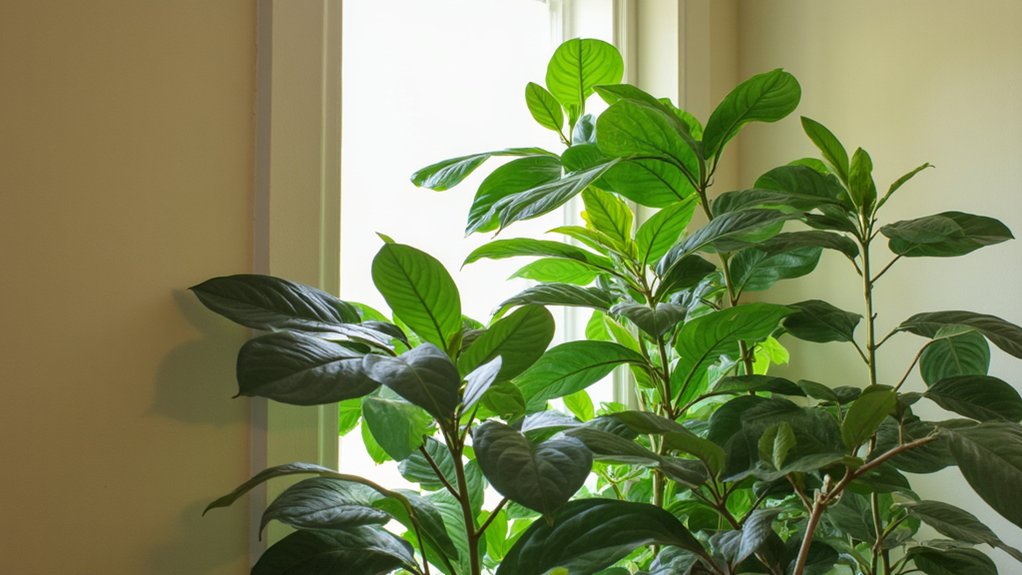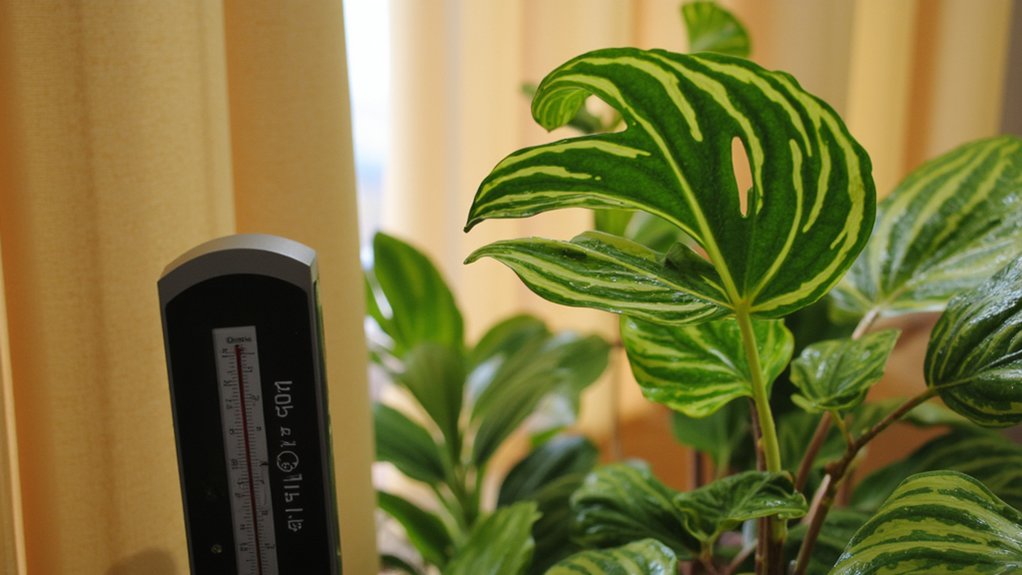Over 80% of indoor gardeners report that Philodendrons are among their easiest plants to maintain. You’ll find these tropical beauties thriving in homes worldwide, thanks to their remarkable adaptability and forgiving nature. While they’re known for their low-maintenance reputation, there’s a significant difference between keeping a Philodendron alive and helping it flourish – and the secret lies in understanding a few key care requirements that most plant owners overlook.
Contents
- 1 Light Requirements for Indoor Philodendrons
- 2 Watering Schedule and Best Practices
- 3 Optimal Temperature and Humidity Conditions
- 4 Soil and Potting Requirements
- 5 Fertilizing Your Philodendron
- 6 Pruning and Maintenance Tips
- 7 Common Pests and Disease Management
- 8 Propagation Methods and Techniques
- 9 Training and Support for Climbing Varieties
Light Requirements for Indoor Philodendrons

Philodendrons thrive in bright, indirect light that mimics their natural habitat beneath the rainforest canopy. You’ll want to place your plant 3-6 feet from an east or north-facing window, where it’ll receive filtered morning sun without harsh afternoon rays.
If you notice your philodendron’s leaves turning yellow or pale, it’s getting too much light. Move it farther from the window or add a sheer curtain. Conversely, if you see long, leggy stems with small leaves spaced far apart, your plant needs more light. In low-light conditions, you can supplement with grow lights for 8-10 hours daily.
Watering Schedule and Best Practices
Although these tropical plants are resilient, they need a consistent watering schedule to truly flourish. You’ll want to water your philodendron when the top 1-2 inches of soil feels dry to the touch, typically every 7-10 days in average home conditions.
Don’t let your plant sit in standing water, as this can lead to root rot. Instead, water thoroughly until it drains from the bottom holes, then empty the catch tray after 15 minutes. During winter months, reduce watering frequency by about 25%.
For best results, use room temperature water and mist the leaves once weekly to maintain humidity. You’ll know you’re overwatering if yellow leaves appear.
Optimal Temperature and Humidity Conditions

Beyond proper watering, creating the right environment is key to indoor success. Your philodendron will thrive in temperatures between 65-85°F (18-29°C), though it’s best to maintain a steady 70-75°F (21-24°C) range during the day.
These tropical plants need humidity levels of 60-70% to flourish. If your home’s air is dry, especially during winter months, you’ll need to boost moisture. Place a humidity tray filled with pebbles and water beneath the pot, or run a humidifier nearby. You can also mist the leaves every few days, but avoid spraying during evening hours to prevent fungal issues.
Soil and Potting Requirements
Since proper soil and drainage form the foundation of healthy growth, you’ll need a well-draining potting mix that’s rich in organic matter. Create your own blend using two parts regular potting soil, one part peat moss, and one part perlite or coarse sand.
Choose a pot that’s 1-2 inches larger than your philodendron’s root ball, ensuring it has adequate drainage holes. When repotting, gently loosen the roots and position the plant at the same depth it was growing previously. Top off with fresh soil mix, leaving about an inch of space below the pot’s rim for watering.
Fertilizing Your Philodendron

Your philodendron’s nutritional needs will change throughout the growing season, much like its soil requirements. During spring and summer, feed your plant monthly with a balanced, water-soluble fertilizer (10-10-10), diluted to half strength. Add the solution right after watering to prevent root burn.
Cut back on fertilizing during fall and winter months when growth naturally slows. If you notice pale leaves or sluggish growth, try supplementing with an iron-rich fertilizer every other month. Remember to flush the soil thoroughly every six months to prevent salt buildup, which can damage your plant’s root system.
Pruning and Maintenance Tips
Regular pruning keeps philodendrons compact and encourages bushier growth throughout the year. To prune effectively, use clean, sharp scissors to cut stems ¼ inch above a leaf node, removing any yellowed, damaged, or dead foliage at the base.
When your plant becomes leggy, trim back long vines by up to one-third their length. You’ll want to maintain this routine every 2-3 months during the growing season. Don’t forget to wipe the leaves monthly with a damp cloth to remove dust and inspect for pests.
Save healthy cuttings for propagation – they’ll root easily in water within 2-3 weeks.
Common Pests and Disease Management
While maintaining a consistent pruning schedule helps prevent issues, philodendrons can still face challenges from unwanted visitors and diseases. Watch for common pests like spider mites, mealybugs, and scale insects, which typically gather on leaf undersides and stems.
If you spot pests, isolate your plant immediately and treat it with insecticidal soap every 7-10 days. For fungal infections, which often appear as brown or black spots on leaves, reduce watering and improve air circulation. You’ll need to trim affected areas with sterilized scissors.
To prevent future problems, inspect your plant weekly, wipe leaves with a damp cloth monthly, and maintain proper humidity levels between 60-75%.
Propagation Methods and Techniques
Three reliable methods exist for propagating philodendron plants: stem cuttings, air layering, and division. For stem cuttings, cut a 4-6 inch section below a node, remove lower leaves, and place in water or moist soil. You’ll see roots develop within 2-3 weeks.
Air layering involves making a small incision on the stem, wrapping it with damp sphagnum moss, and securing it with plastic wrap. Once roots form after 3-4 weeks, cut below the new root mass and pot separately.
Division works best for mature plants. Simply separate the root ball into sections during repotting, ensuring each division has healthy stems and roots.
Training and Support for Climbing Varieties
Many climbing philodendron varieties need proper support structures to grow into their natural, mature forms. You’ll want to install a moss pole, trellis, or sturdy stake when your plant is young, positioning it near the center of the pot where the main stems emerge.
Guide your philodendron’s vines by gently wrapping them around the support, securing them with soft plant ties or twine every 4-6 inches. Don’t tie too tightly, as stems need room to grow.
For larger specimens, you can add extensions to your moss pole or switch to a sturdier support system like a bamboo lattice that’s at least 2 feet taller than the current plant height.
